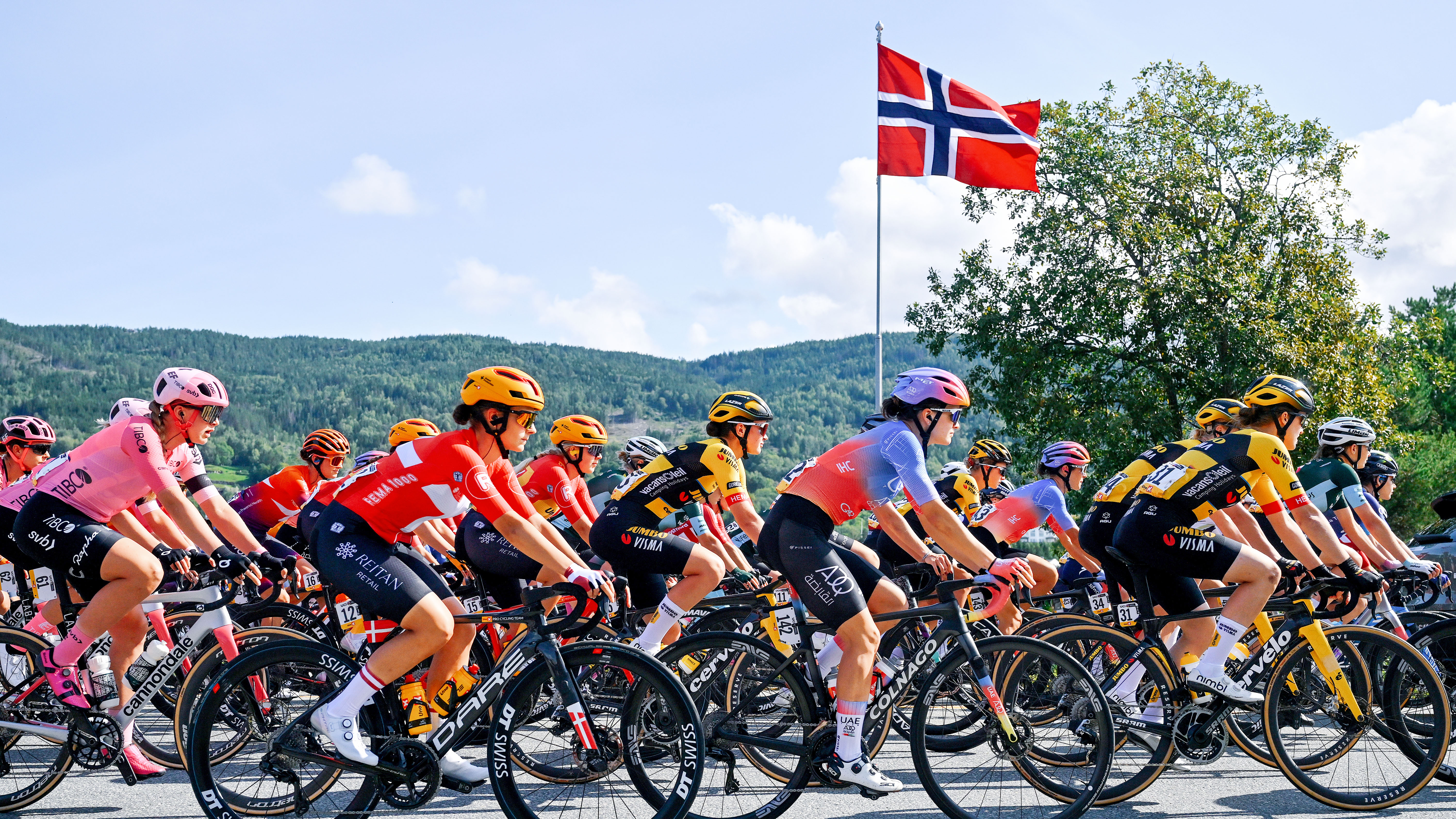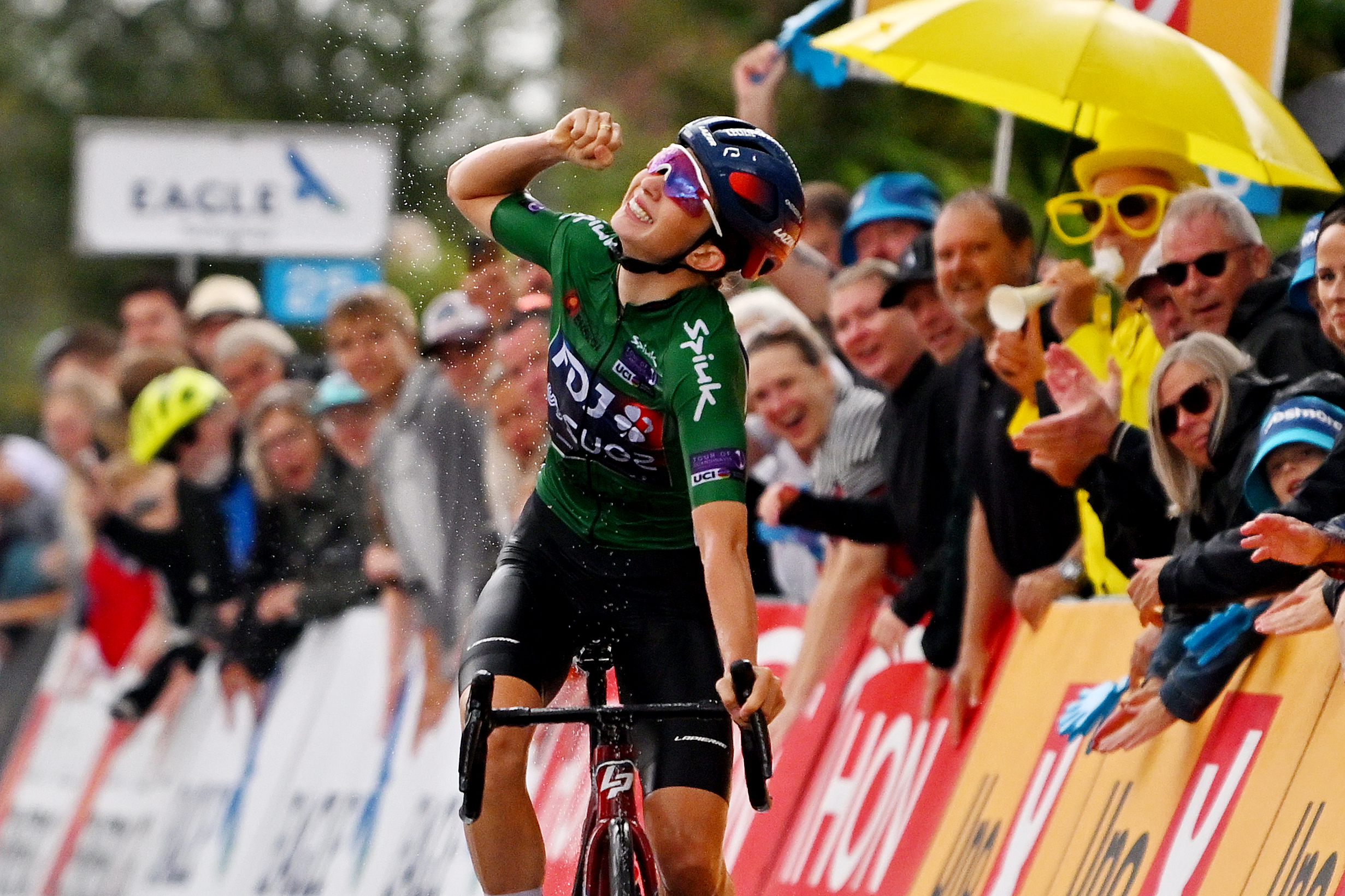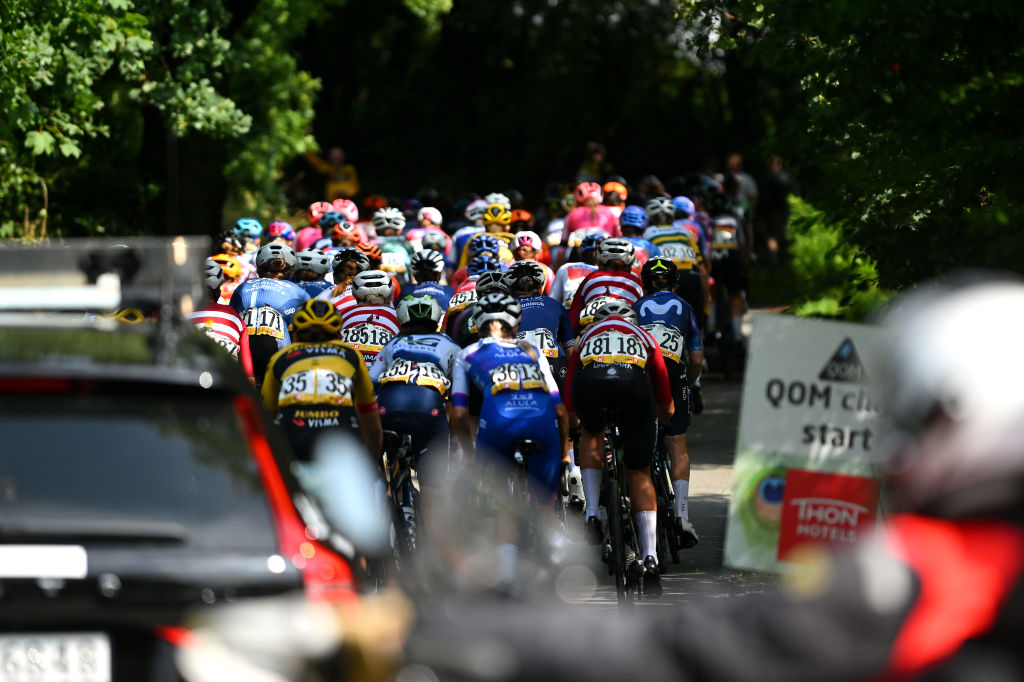Logistics, Environment and Expansion: Inside the Tour of Scandinavia
An in-depth look at the organisation of the multi-country stage race, its challenges and its potential

The 2023 Tour of Scandinavia was the second edition of the stage race that grew out of the Ladies Tour of Norway to also include Denmark and (in 2022) Sweden. At the race, Cyclingnews spoke exclusively to Roy Moberg, general director of the race, Morten Anderson, president of the DCU, the Danish cycling union, and the race's overall winner Annemiek van Vleuten about the expansion from an event in the southeastern corner of Norway to one that spans several countries, the logistics this expansion entails, and the possibilities for future growth.
A race that leapfrogs two nations has its challenges, not the least of which was the mid-event shift of all the riders, staff and equipment hundreds of kilometres over land and water.
As the big transfer of the five-day event from Norway to Denmark unfolded, it was clear just how much work had gone into executing it smoothly: Friday's stage 3 finished in Larvik, the port from which ferries cross the Skagerrak to Hirtshals in Northern Denmark. Riders and some staff were even airlifted from Sandefjord-Torp airport, less than 25km from Larvik, to Billund, just under 60km south of Herning. That meant they reached their accommodation for the last two stages at a respectable hour, around seven.
The team and race vehicles and most staff however took the 4-hour Larvik-Hirtshals ferry and even after crossing the strait dividing the nations still had to drive almost 200 kilometres to Herning, arriving very late.

"A shout-out to the organisation because for the riders it was well-organised," said Van Vleuten of the transfer. "But it was challenging for our staff, a lot of them arrived at midnight. It's a lot of travelling. It's also nice to have the stages late for the television coverage but that also means that our staff is working really late, so for them it's hard."
The time cost to those involved in the race, is also not the only consideration.
"I have to say from an environmental view, I'm not a big fan of so much travelling and an extra plane. I think we should focus a bit on keeping the sport clean, not just here, but in cycling in general. I'm also not a big fan that the Tour de France will start in the Netherlands next year for an eight-day stage race. I would prefer the Tour de France Femmes to be in France, we should also consider the environment in these decisions," she said.
Get The Leadout Newsletter
The latest race content, interviews, features, reviews and expert buying guides, direct to your inbox!
The Tour of Scandinavia has an Eco-Lighthouse certification, equivalent to the EU's Eco-Management and Audit Scheme (EMAS), and is making conscious efforts to reduce its environmental footprint, but the impact of the travel to and transfers within Scandinavia should not be underestimated.
In fact, Tour of Scandinavia general director Roy Moberg identified the logistics of taking a bike race to two or three different countries as one of the most important issues for the race.
"It is a critical issue for us as organisers. It's a little bit about money, how to fund all these logistics activities, but it's also a question of how many people you need to organise the race. And from the riders' and the teams' point of view, there are crucial issues which have to be controlled," Moberg said.
So is there a solution to make the challenges of moving across multiple nations easier as organisers work to consolidate the Tour of Scandinavia's place in the top-tier of women's cycling?
Obstacles to expansion in Sweden and Denmark

Van Vleuten made the point that the original plans for the Tour of Scandinavia as a ten-day race across Norway, Denmark, and Sweden would be better than the current incarnation.
"It was a really good idea when they announced it as a ten-day stage race, and I hope they get back to that. Right now, it is only two countries and then I would rather say, make it a Tour of Denmark and a Tour of Norway. It's a lot of travel for only 5 days, but I hope that it can be a good start and that Sweden is also joining the party because to have a ten-day stage race would be really nice. And then it's really the Battle of the North," the overall winner said.
When the first plans for the Tour of Scandinavia were announced in May 2019, Moberg and co. were indeed hoping for ten days, possibly including a rest day. However, the realisation of this vision was delayed by the COVID-19 pandemic, and the first edition of the Tour of Scandinavia was pushed back from 2020 to 2022, with six stages – one each in Denmark and Sweden and four in Norway.
For 2023, the organisers had also initially planned a six-stage race, with stages 1, 3, and 4 in Norway, stage 2 in Sweden, and the final two stages in Denmark. However, the Swedish stage had to be cancelled in the months leading up to the race, leaving a five-stage race.
In Moberg's view, adding another stage to the race to limit the length of transfers between each stage would be ideal – however, that comes with its own challenges.
"In a perfect world, we need maybe one more stage to link all three countries together, because then the transfers can be reduced and that will be good for everyone. That's the perfect scenario, but it has to be funded," he said.
Moberg confirmed that he had not given up on the vision of a ten-day race, but that this scenario wasn't realistic at the moment. Asked about the reasons for the cancellation of the Swedish stage, he said that the rising costs for Swedish police marshalling and the complications in getting permits for road closures weren't the deal breakers in this case.
"It's more because of the lack of income. It's hard to find partners and sponsors in Sweden. We are supported by the government in Norway, by the region and by some destination marketing companies, and in Denmark, they also have a tradition to involve the municipalities, the host cities. But in Sweden, they don't have this tradition, so it's hard to find the money to fund a stage in Sweden. We are really sorry about that, but we will try to have Sweden in the concept again next year," Moberg explained.
He said that there would be talks and meetings in the next months.
"One option is to link in Vårgårda because that is a very good race with a very good tradition. I really like Vårgårda, the race has a very nice atmosphere and it's a pity if they don't survive. That would be great, but it's hard to conclude because there are many criteria which have to be evaluated, especially the transfers. We will be in touch with them this autumn, but you have to remember that Vårgårda is a very local race. It's not so easy to link with our race concept because of that, the sponsors also liked to be very local," Moberg promised to look at including the long-standing race in West Sweden into the Tour of Scandinavia.
Another way to expand the race would be to include more stages in Denmark. The race already increased its time in Denmark from one stage to two, including the Tour of Scandinavia's first ITT that ended up being decisive for the general classification.
The Danish stages are designed by the Danish cycling federation DCU and held in cooperation with the Norwegian organisation that ran the Ladies Tour of Norway and now manages the Tour of Scandinavia. DCU president Morten Anderson confirmed his organisation's desire to expand the Danish part of the race, but also pointed out that DCU had a lot on its plate at the moment.
"This is an exciting race, and women's cycling is growing a lot right now. We are definitely looking at what is possible in that perspective, but we also need to consider what we can and can't do as an organisation. At the moment, we are working on getting a WorldTour one-day race to Copenhagen, and that puts some constraints on what we can do right away, but the prospect is there," Anderson said.
"We see a lot of positive interest around women's cycling, and that is a fantastic development, but it's also a big event that demands a lot. It is hard to put together a WorldTour race with all the requirements there are, and it's expensive, too. We have to be honest and admit that DCU isn't a massive organisation and doesn't have a huge amount of money. At the same time, we should be ambitious, and there is a lot of interest in becoming a host city for this race. Right now, it is mainly about DCU as an organisation. Although we have the desire to do more, we have to do it in a way that is viable organisationally and financially," he continued.
Plans for the future

Looking forward to 2024 and beyond, Moberg talked about his plans for the third and following editions. The current annual budget for the Tour of Scandinavia is 1.5 million Euros, of which the lion's share – some 1.1 to 1.2 million – still come from Norway.
"I think we plan with six stages for next year, and then we'll see what happens. Women's cycling in general is in a huge development in the last couple of years, and what we can hope for is that more partners see women's cycling with a lot of potential for promotion and want to invest. Then we can also expand the number of stages and have more optimised logistics. Everything is linked to each other. We would love to have more sponsors, and we need more sponsors if we want to expand," he said.
In the race organisation, Moberg has the crucial support of race director Anders Eia Linnestad whose name shows up in pretty much every cycling race that's held in Norway. Linnestad recently joined the Uno-X Pro Cycling Team, but Moberg could dispel doubts about the future involvement of his race director in the Tour of Scandinavia.
"Anders already started working for Uno-X from 1 August, but he will still continue as race director for us. That is very good for the organisation because he is very good, very professional. He has been involved in cycling for a long time, already when he was in his mid-twenties. He has a lot of experience, it's good for Norwegian cycling to have Anders," Moberg said.
The next step for the race would be to look beyond the Østfold, Vestfold, and Buskerud regions in Norway while still maintaining Danish and hopefully Swedish involvement.
"If we can organise it in a good way when it comes to logistics and the transfers, what could be very nice is to start in the north or the west of this part of Norway and end up in Denmark, or the other way around. So maybe next year, it could be to start in Denmark with two stages, move to Sweden for one or two stages and include some stages in Norway, end up in the north of southern Norway, and then go back by plane from Oslo-Gardermoen, that's quite convenient for the riders as well," Moberg said, laying out an idea for a possible 2024 race route.
When asked what he meant by 'the north of this part of Norway', he named a city well-known for winter sports that also is a regular host city in the men's Tour of Norway and the men's Uno-X Development Weekend.
"Lillehammer, for instance, would be a good step, they have the tradition there with good races," Moberg hinted at a possible trip to the city of the 1994 Olympic Winter Games.
Looking west, he named two other cities that delimited the part of Norway the race could be visiting in the short term while not ruling out Vestlandet in the long term.
"We can maybe involve Kristiansand, and maybe Geilo can be an option, but not Bergen, not Stavanger. The distances are too big. Then we need ten stages, and that's not realistic for the moment.
"But maybe it can be in the future," Moberg said.
Lukas Knöfler started working in cycling communications in 2013 and has seen the inside of the scene from many angles. Having worked as press officer for teams and races and written for several online and print publications, he has been Cyclingnews’ Women’s WorldTour correspondent since 2018.